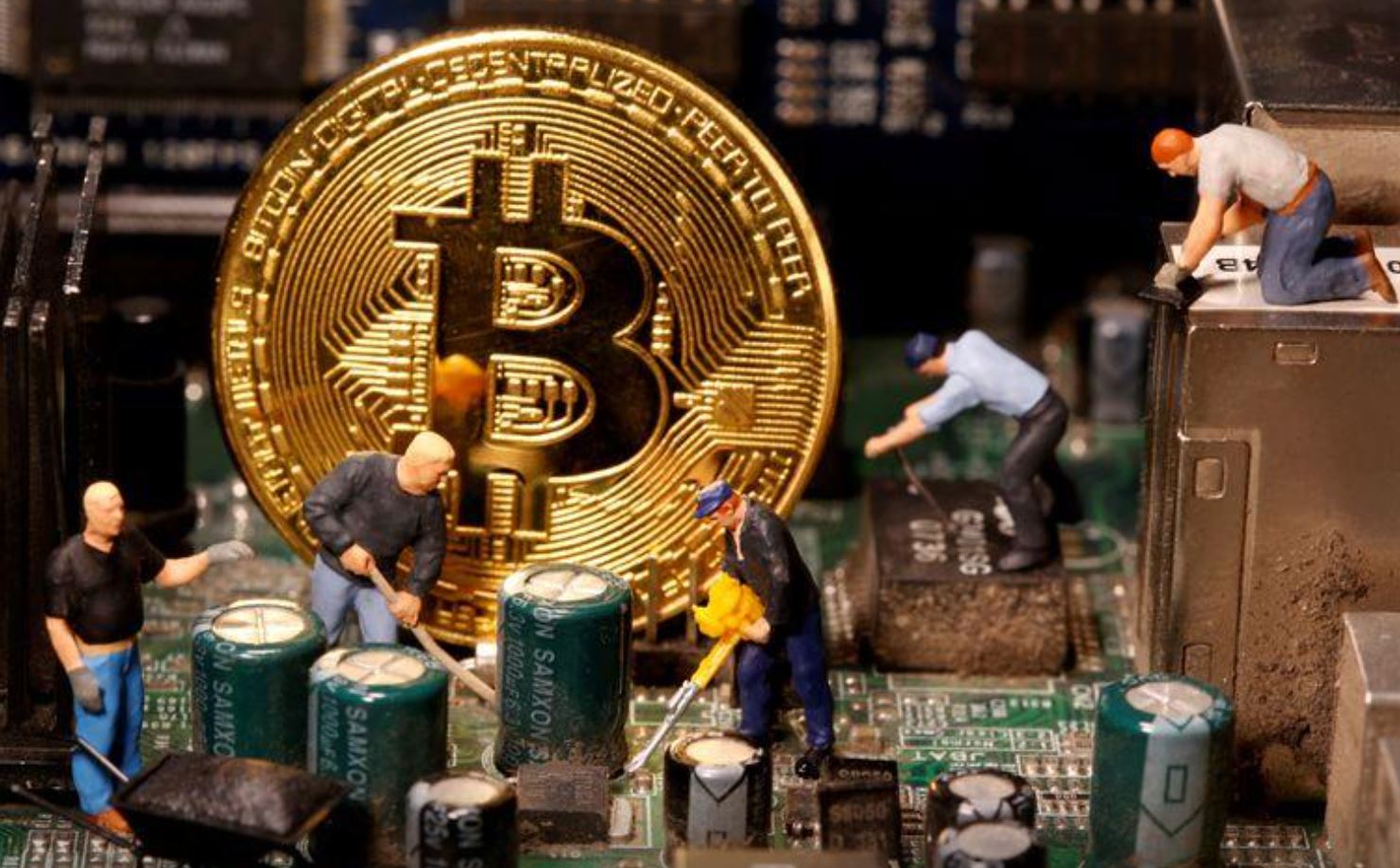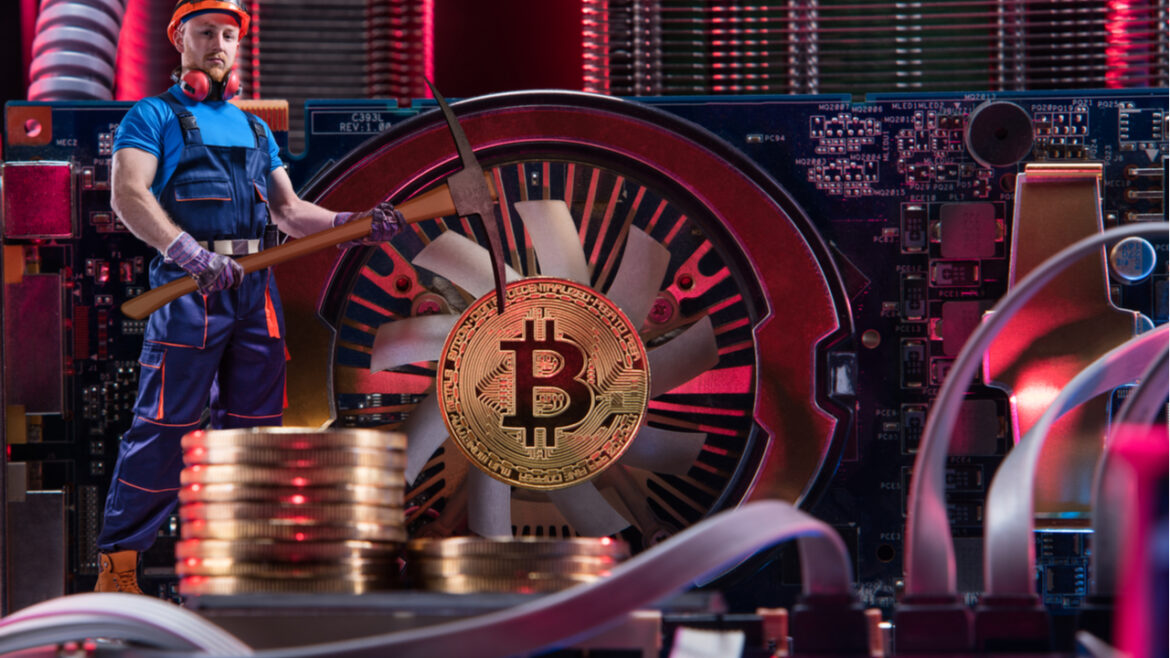Bitcoin mining plays a crucial role in the Bitcoin network because it enables decentralised transaction validation and generates new currencies. Mining is still an important element of the ecosystem as blockchain technology develops and the financial world moves towards digital assets. Mining is more than simply a technical activity; it keeps the network safe and encourages people to join by giving them incentives. This is the engine that runs Bitcoin’s decentralised structure.
Mining has been done using a consensus process called Proof of Work since Satoshi Nakamoto created Bitcoin in 2009. This system depends on miners using their computers to solve challenging math problems. The first miner to solve the problem gets to upload a new block of verified transactions to the Bitcoin blockchain and gets a set amount of bitcoins plus transaction fees.
Bitcoin Mining Process Overview
Bitcoin mining starts with hashing, which is when miners use the SHA-256 cryptographic technique to generate a hash value. The network will only accept the hash if it meets specific difficulty requirements. This competition amongst miners makes the blockchain safe and hard to hack. Every 2016 block, or about every two weeks, the mining difficulty changes on its own. This system makes sure that blocks are added at regular ten-minute intervals.
Mining has changed from CPUs to GPUs to ASICs (Application-Specific Integrated Circuits) over the years. These machines are far more efficient because they were made just for mining. ASICs are currently the standard in the industry because of companies like Bitmain (renowned for its Antminer series) and MicroBT. Mining farms, which are large facilities that accommodate hundreds or thousands of ASICs, currently represent the most prevalent type of mining operation. They are often found in places with lots of inexpensive electricity, such as regions of Texas, Kazakhstan, and Scandinavia.
ChatGPT said:
The block reward is the main reason miners work. Every four years, the Bitcoin halving event cuts the reward in half. The reward for each block is currently 6.25 bitcoins, but the amount will drop to 3.125 bitcoins after the next halving in 2024. Bitcoin’s monetary policy has this mechanism built in to make sure there isn’t too much of it and to keep inflation in check.
 Miners get transaction fees in addition to block rewards. These costs grow more relevant when block rewards go down. This dual-incentive approach ensures the system’s longevity, even after mining all 21 million bitcoins. This is projected to happen around the year 2140.
Miners get transaction fees in addition to block rewards. These costs grow more relevant when block rewards go down. This dual-incentive approach ensures the system’s longevity, even after mining all 21 million bitcoins. This is projected to happen around the year 2140.
ChatGPT said:
Mining for Bitcoin uses a lot of electricity. The Cambridge Centre for Alternative Finance says that Bitcoin mining uses as much electricity in a year as some whole countries do. This environmental impact has led to a lot of controversy and regulatory scrutiny, especially from governments and environmental groups.
The mining industry, on the other hand, is moving towards more environmentally friendly energy sources. More and more eco-friendly mining companies are using hydroelectric electricity in Canada and Sichuan, geothermal energy in Iceland, and wind farms in Texas. Riot Platforms and Marathon Digital are two examples of companies that have openly committed to ESG standards. Smaller miners are also embracing greener practices to lower their carbon impact and stay competitive.
ChatGPT said:
Regulation is crucial for the future of Bitcoin mining. China prohibited mining in 2021, which led to a huge number of miners leaving for nations that are more hospitable to cryptocurrencies, such as the US, Kazakhstan, and Russia. With this change in the world, the U.S. now has the most mining activity, changing the way the global hash rate is spread. In the U.S., governments like Texas and Wyoming have made it easier for mining infrastructure to be built by lowering energy prices and granting tax breaks.
 On the other hand, places like New York have put a stop to some kinds of mining, especially those that use non-renewable energies. The Financial Action Task Force (FATF) and local regulators are still looking at how mining affects energy policy, financial crime, and taxes around the world. As regulation gets better, the industry should gain more clarity and trust from investors.
On the other hand, places like New York have put a stop to some kinds of mining, especially those that use non-renewable energies. The Financial Action Task Force (FATF) and local regulators are still looking at how mining affects energy policy, financial crime, and taxes around the world. As regulation gets better, the industry should gain more clarity and trust from investors.
Future of Bitcoin Mining
In the future, Bitcoin mining will be affected by new technologies, new ways to use energy, and new rules. New mining protocols, such as Stratum V2, aim to make things safer and more decentralised. At the same time, making home mining possible again and decentralising mining pools may help restore balance in the ecosystem.
As more people use Bitcoin, the network’s security depends on the rewards miners receive for their labour. Proof of Stake has become more popular on other blockchain networks, such as Ethereum. However, Bitcoin’s Proof of Work mechanism is likely to stay in place because it is so secure and works well for business.
Final thoughts
Link this post to other internal content that is similar, including “What is Blockchain Technology”, “Proof of Work Explained”, and “Cryptocurrency and Sustainability”. This will help users stay interested and give you more authority on the subject. For more proof, use trustworthy sites like Bitcoin.org, CoinDesk, and scholarly publications like the MIT Digital Currency Initiative.



